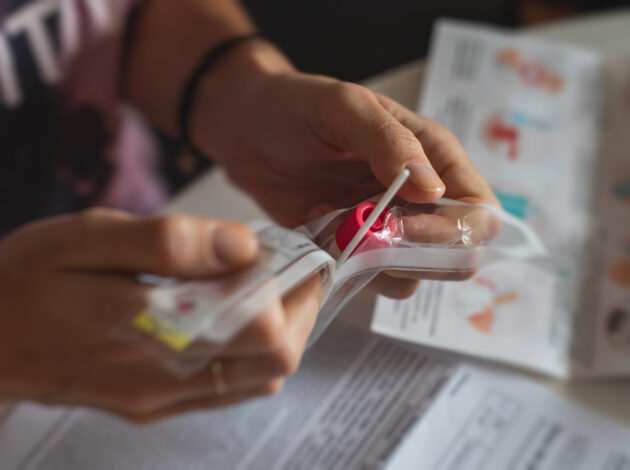The COVID-19 Infection Survey is changing. What does this mean for how the UK monitors the virus?

The Office for National Statistics (ONS) COVID-19 Infection Survey was launched in April 2020 to provide valuable, timely estimates on how many people were infected with COVID-19. These data helped the governments of UK countries make decisions on how to respond to the evolving pandemic and provided information to the public. The survey is changing during 2022. What do these changes mean and how will the survey continue to be valuable? Here, Sarah Crofts explains more.
Changes to our data collection
Firstly, we are changing the way that we collect our data. So far, survey workers have visited people at their homes monthly to collect nose and throat swabs and, for some participants, blood samples, and have asked survey respondents a series of questions. Participants have always taken their own samples, and survey workers have stayed at least 2m away. These samples and information tell us who has had COVID-19 recently or in the past and helps us to identify patterns among people who live in parts of the UK, are in a particular age group, or have behaviours in common such as always wearing a face covering in public places.
Soon, all of this information will be collected online or by telephone, and participants will post their swab and blood samples, or these will be collected by a courier. We are offering participants different options for completing the questionnaire and returning their samples to make sure the survey remains as accessible and representative as possible.
Changes to our sample size
At its largest, the survey collected samples and information from around 400,000 people across the UK every month. This was during times when policy decisions were being made frequently, such as the closing of schools, hospitality or local lockdowns. At those times, it was crucially important for these decisions to be based on data that had a very high level of precision. As the pandemic has evolved, so has the need for data. It is still important that our survey is able to estimate infection levels, measure changes in trends and identify new variants, but the high level of precision needed during earlier stages of the pandemic is now less critical. We can do this with a smaller number of tests every month. After we change how our data and samples are collected, our statistics are anticipated to be based on around 300,000 swab tests and around 120,000 blood tests each month.
Every participant who wants to remain in the survey will be offered the opportunity and we will continue to publish sample counts with our weekly statistics and margins of error alongside our estimates. We will retain the ability to adjust our sample in response to changing needs for information as the pandemic evolves.
The continued value of the survey
The data collected by the COVID-19 Infection Survey will continue to provide extremely valuable insight into how the virus is changing in the UK and we remain grateful to our participants whose contribution is essential in helping to build national and international understanding of the Covid-19 pandemic. This includes how the virus is spreading, the effectiveness of vaccines, the protection provided by previous infection, and how symptoms may vary with different variants alongside our estimates of swab and antibody positivity that we will continue to measure.
What could this mean for the quality of the data?
Any changes in the way that data are collected can result in changes to the estimates produced from those data. The sample size will be carefully reviewed in collaboration with our academic partners to make sure we continue to provide reliable measures of how COVID-19 infection is changing in the UK. Sometimes, particularly during a period when rates of infection are low, we may not be able to provide detailed breakdowns, for example for small age groups or geographically small parts of the UK. This occurred during periods of low infection in Spring 2021, and we will continue to indicate when this happens in our regular publications.
It is possible that the survey may represent some groups of the population differently compared to face-to-face data collection. This could work in either direction – some people might be less willing or able to complete online surveys, or others may prefer to provide information digitally and be more likely to take part if they do not have to stay in for the study worker to visit their home. Samples may take slightly longer to be delivered to the laboratory for some participants, which could affect the quality of the sample being tested.
We are in the process of testing the impact of these changes on our results for the first participants to move to the new approach and will continue to assess the quality of our data as these changes take place across the whole survey. These first participants have been selected to represent a variety of accessibility needs. These quality assessments will help us work with our academic partners to develop our statistical models to account for any changes in the information collected. As we complete our investigations, the results will be available in published quality reports.
While these changes take place, we aim to continue to provide regular estimates of COVID-19 swab and antibody positivity to our high-quality standards. If we identify that further work is needed to meet these standards, it is possible that there could be changes to some of our publications over the summer months. This will ensure that the data we publish continue to provide widely used, valuable information on COVID-19 as the pandemic evolves.

Sarah Crofts is Head of Analytical Outputs for the COVID-19 Infection Survey